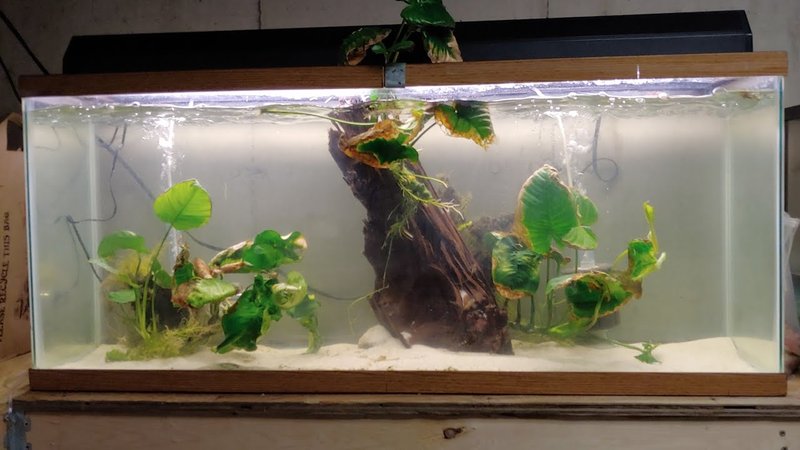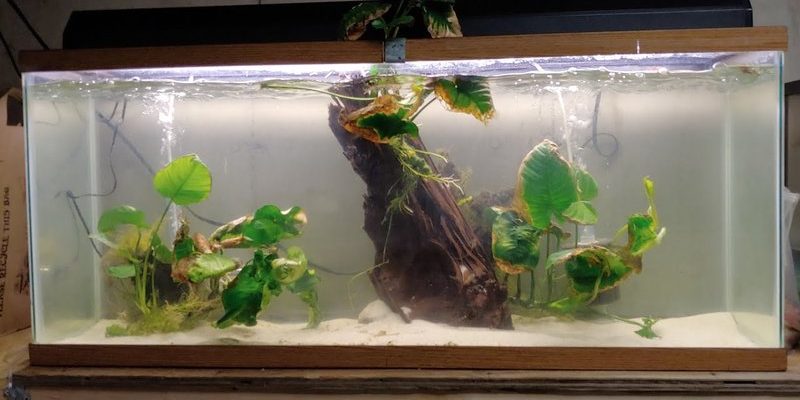
To kick things off, you might be wondering what these fish need for a happy, healthy life. Plecos come in various species, but they share some common requirements that you should keep in mind. From tank size to water conditions and décor choices, getting these elements right can make all the difference. Think of it like setting the right mood for a dinner party—everything from the lighting to the table setting plays a part. Let’s explore how to set the stage just right for your Plecostomus.
Choosing the Right Tank Size
When it comes to tank size for your Plecostomus, size definitely matters. These fish can grow quite large, with some species reaching over a foot in length. Ideally, you’ll want to start with a tank that holds at least 75 gallons of water. While smaller tanks might seem tempting, they can lead to stress for your Pleco due to limited swimming space and poor water quality.
If you’re committed to keeping a Plecostomus, consider their adult size as part of your tank decision. A larger tank allows for better water quality management and provides ample room for your fish to explore. Here’s a quick breakdown of ideal tank sizes based on the species you choose:
- Common Pleco: 75 gallons or more
- Bristlenose Pleco: 30 gallons or more
- Clown Pleco: 20 gallons or more
Remember, larger tanks provide more stable water parameters, which is crucial for the overall health of your Plecastomus. The more space they have, the happier they’ll be, so it’s worth considering that larger investment upfront.
Water Conditions: The Perfect Blend
Water conditions can shape your Plecostomus’s health, just as the right temperature can affect your comfort at home. For Plecos, maintaining the right temperature is essential. They generally thrive in a water temperature between 75°F and 80°F. A reliable aquarium heater can help you achieve and maintain this temperature.
Next up is pH levels. Plecostomus prefer a slightly acidic to neutral pH—ideally between 6.5 and 7.5. Regular testing with a reliable pH kit will keep you informed, and adjusting the pH can sometimes be as simple as adding specific aquarium additives or driftwood, which can help to lower the pH naturally.
Lastly, don’t forget about water hardness. Plecos like their water to be moderately hard, at a level of 4 to 20 dGH. This level helps mimic their natural habitat. If you’re unsure about how to adjust your water parameters, let me explain—always make changes gradually to avoid shocking your fish.
Filtration: Keeping It Clean
A good filtration system is like having a reliable vacuum cleaner at home; it ensures that your living space stays clean and healthy. When setting up your Plecostomus tank, investing in a quality filter is crucial. Look for a filter that can handle at least double the tank’s gallons per hour. For example, if you have a 75-gallon tank, aim for a filter that can process at least 150 gallons per hour.
You might also consider a canister filter or a power filter. Canister filters are excellent for larger tanks as they provide strong filtration and can hold a lot of media, meaning cleaner water with less maintenance on your part! Don’t forget to change your filter media regularly and perform routine water changes to maintain a healthy environment.
Creating a Cozy Décor
The décor in your Plecostomus tank doesn’t just serve an aesthetic purpose—it’s essential for their well-being too! Plecos love to hide and explore, so providing suitable décor can keep them happy and reduce stress. Think of it as creating little nooks and crannies in your tank for them to feel safe.
Start with a base of smooth rocks and driftwood. Driftwood not only offers a great hiding spot but also provides a natural food source as Plecos love to graze on it. Just make sure the driftwood is aquarium-safe! You can also add some caves or coconut shells where they can tuck away when they want some alone time.
You might be tempted to go for vibrant plants, but keep in mind that Plecos can be quite the plant grazers. Choose robust plants like Java Fern or Anubias, which can withstand a little nibbling. Also, be careful with sharp decorations, as Plecos can get injured on rough surfaces.
Companions for Your Plecostomus
Choosing tank mates for your Plecostomus is like planning a social gathering—some guests mix well, while others may clash. Plecos are generally peaceful fish, but they can become territorial, especially when they start to reach their full size.
Good companions include Tetras, Guppies, and Corydoras, as these species tend to swim at different levels of the tank and won’t compete for the same space. Avoid aggressive or fin-nipping fish that might disturb your Pleco.
Here’s a handy list of potential tank mates to consider:
- Neon Tetras: Colorful and small, they add energy without intruding.
- Corydoras Catfish: Bottom dwellers that keep the tank active and interesting.
- Guppies: Hardy and vibrant, these little swimmers can fit right in.
Before adding any new friends, remember to introduce them gradually. This way, your Plecostomus can adjust to the changes without feeling threatened.
Maintaining Your Plecostomus Tank
Caring for your Plecostomus tank is an ongoing commitment—like keeping the house clean and stocked with snacks. Regular maintenance is essential for ensuring a healthy environment. Aim to do weekly water changes of about 15-20% to keep the water parameters stable and free from harmful toxins.
Don’t forget to check your filtration system and clean it as necessary. This might include rinsing the filter media in old tank water instead of tap water, which can kill beneficial bacteria. Monitor other aspects of your tank, like ammonia and nitrate levels, with reliable test kits.
You might be wondering, “How do I know if my Pleco is happy?” Look for signs like active behavior, regular grazing, and bright coloration. If your Plecostomus is out and about, it’s usually a good sign that your set-up is doing its job!
Setting up the ideal tank for your Plecostomus can feel like a big undertaking, but honestly, it’s all about creating a cozy environment where they can thrive. From choosing the right tank size to monitoring water conditions and décor, each step contributes to the overall well-being of your fish. Remember, your Plecostomus isn’t just a pretty face—it’s a living creature that deserves thoughtful care.
So, as you embark on this fish-keeping adventure, take your time. Enjoy creating a beautiful, functional tank that not only serves your Pleco but also delights you every time you peek in. With the right setup, you’ll be rewarded with years of fascinating behaviors and a lovely, clean tank. Now, go ahead and dive into the world of Plecostomus keeping—you’ve got this!

